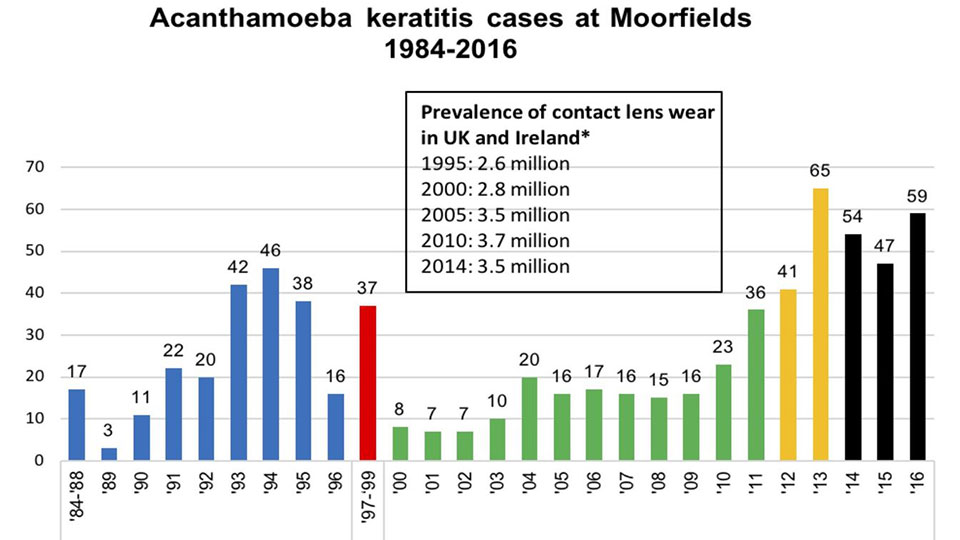- OT
- Science and vision
- Research
- “Outbreak” of sight-threatening eye infection among UK contact lens wearers
“Outbreak” of sight-threatening eye infection among UK contact lens wearers
Moorfields Eye Hospital records show that a quarter of patients infected with acanthamoeba keratitis became blind or were left with less than 25% of their vision
New research published in the British Journal of Ophthalmology has highlighted an increase in the number of patients suffering from acanthamoeba keratitis.
Using data from Moorfields Eye Hospital, scientists found a threefold increase in the eye infection since 2011 in South East England.
Around one in four patients with acanthamoeba keratitis had less than 25% vision or became blind following the disease. Overall, 25% of patients required a corneal transplant.
Professor John Dart, of University College London and Moorfields Eye Hospital, highlighted that while the infection is rare, affecting roughly 2.5 contact lens wearers in every 100,000 annually, it is largely preventable.
“This increase in cases highlights the need for contact lens users to be aware of the risks,” Professor Dart emphasised.
Alongside annual incidence data from Moorfields Eye Hospital between 1985 and 2016, researchers conducted a case-control study of 63 people with acanthamoeba keratitis and 213 without the condition who wore reuseable contact lenses on a daily basis.

All the study participants completed a questionnaire, with the results revealing a series of factors that were associated with a higher risk of developing the infection.
Habits associated with a three-fold increase in risk included poor contact lens hygiene, failing to wash hands before lens handling and wearing contact lenses in swimming pools or hot tubs.
The use of Oxipol for disinfection was associated with a more than four times greater risk of developing the infection. Since the time of the investigation the solution has been phased out by the manufacturer.
Researchers also found that ionic hydrogel contact lenses with a high water content (group IV) were associated with a more than six times higher risk of acanthamoeba keratitis.
Professor Dart emphasised that the current “outbreak” of the infection is unlikely to be due to any one of the identified risk factors in isolation.
“People who wear reusable contact lenses need to make sure they thoroughly wash and dry their hands before handling contact lenses, and avoid wearing them while swimming, face washing or bathing. Daily disposable lenses, which eliminate the need for contact lens cases or solutions, may be safer and we are currently analysing our data to establish the risk factors for these,” he observed.
AOP clinical and regulatory officer, Farah Gatrad, told OT that the research highlighted how important patient education and good contact lens hygiene are.
“We know from member research that many patients are still unaware of the associated risks and are often unclear on how to use contact lenses safely,” she shared.
To help practitioners in community practice, the AOP have created a set of patient resources, including video guides on handwashing and contact lens use.
Image credits: Getty and British Journal of Ophthalmology
Advertisement




Comments (0)
You must be logged in to join the discussion. Log in